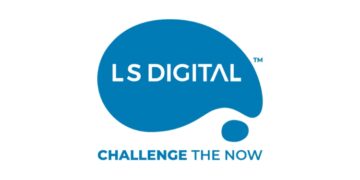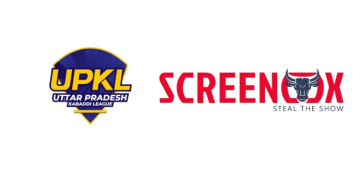In today’s competitive market, understanding consumer needs is paramount—it’s not just about selling a product anymore. Modern consumers make purchasing decisions based on a variety of factors, including the desire for a feel-good experience, the influence of evolving trends, and the impact of social circles. Identifying the ‘why’ behind these purchases—the deeper motivations driving consumer behaviour—allows brands to develop solutions that resonate meaningfully with their audience. It’s essential for brands to not only offer exceptional products but also ensure consumers recognise their value in everyday life.
As of September 2024, 2.71 billion consumers worldwide shop online. This figure is projected to surpass 3.9 billion in the next five years. This shift highlights the critical need for forward-thinking brands to establish a robust digital presence, particularly in the bathroom fittings sector. Today’s consumers frequently conduct online research before visiting stores, particularly given the tactile nature of bathroom products. Therefore, leveraging digital tools—such as geo-targeting, social media, and user-friendly websites or apps—becomes essential in enhancing customer experience. These tools provide valuable product insights, demonstrations, and easy access to customer service. The goal is to seamlessly integrate the offline shopping experience with digital platforms, creating a cohesive and engaging consumer journey.
As consumer behaviour evolves, businesses must adapt their strategies to engage with homeowners effectively and foster long-lasting relationships. Here are some insightful digital marketing strategies tailored for the bath sector.
1. Embrace Visual Storytelling
The bath fitting industry thrives on aesthetics. Leveraging high-quality visuals is essential in capturing your audience’s attention. To showcase your projects, use platforms like Instagram and Pinterest, which prioritise visual content. Invest in professional photography and video production to create compelling narratives around your products and services. Before-and-after transformations and virtual tours can highlight your expertise and inspire potential customers.
2. Optimise for Search Engines (SEO)
SEO is crucial for increasing your online visibility. Conduct keyword research to identify terms that your target audience is searching for, such as “modern bathroom designs” or “bathroom renovation tips.” Optimise your website and blog content by incorporating these keywords naturally, improving your chances of ranking higher in search engine results. Create informative and engaging blog posts addressing common queries or showcasing the latest trends to establish your brand as an industry authority.
3. Leverage Local SEO
For bath businesses, local SEO is a game changer. Optimise your Google My Business profile to ensure accurate information about your location, hours, and services. Encourage satisfied customers to leave positive reviews, as these not only enhance your online reputation but also boost local search rankings. Additionally, participate in local community events or partnerships to further establish your presence and credibility in the area.
4. Invest in Pay-Per-Click Advertising (PPC)
PPC advertising allows for targeted outreach to specific demographics interested in bath products. Use platforms like Google Ads to create campaigns focusing on key services, such as cabinet installation or countertop sales. Design ad copy that highlights unique selling points and promotions, enticing users to click through to your website. A/B testing different ad creatives can help optimise performance and maximise return on investment.
5. Utilise Content Marketing
Content marketing is an effective way to engage your audience and establish authority in the bath industry. Develop a content calendar that includes blog posts, videos, and infographics tailored to your target demographic. Topics could range from “Top Bathroom Trends for 2024” to “How to Choose the Right Bathroom Fixtures.” Offering valuable insights fosters trust and encourages consumers to rely on your brand during their purchasing decisions.
6. Engage on Social Media
Leverage social media platforms to enhance brand visibility and foster community engagement. Create a content strategy that includes a mix of promotional posts, industry news, and customer stories. Use polls, quizzes, and Q&A sessions to interact with your audience directly. Consider collaborating with influencers in the home improvement space to reach a broader audience and enhance your brand’s credibility.
7. Implement Email Marketing Campaigns
Email marketing is a powerful tool for nurturing leads and sustaining customer relationships. Build a segmented email list based on customer interests and behaviours, allowing you to send personalised content. Share exclusive promotions, renovation tips, and product launches to keep your audience informed and engaged. Use attention-grabbing subject lines and clear calls to action to encourage opens and conversions.
8. Tailor Your Strategies to Local Preferences
Understanding regional preferences is crucial for effective marketing. For example, personalisation and influencer collaborations drive engagement in the U.S. and India, while European consumers value sustainability and transparency. In Asia, visual storytelling is key, whereas luxury branding and localised cultural promotions resonate deeply in the Middle East. Adapting your approach to these unique preferences can enhance consumer connection and brand loyalty.
9. Monitor and Analyse Performance
Regularly tracking the performance of your digital marketing efforts is essential for ongoing success. Utilise analytics tools to monitor website traffic, conversion rates, and engagement metrics across your digital platforms. This data will offer valuable insights into what is effective and what may need to be refined. Use these findings to refine your strategies and maximise your marketing efforts.
Conclusion
The global bath and shower products market was valued at USD 48.83 billion in 2023, with projections indicating growth to USD 51.16 billion in 2024 and an estimated reach of USD 79.96 billion by 2032, reflecting a compound annual growth rate (CAGR) of 5.74% during this forecast period[1].
As the bath industry continues to evolve, adopting the recommended digital marketing strategies can set your business apart in a competitive landscape. You can build lasting connections with your audience by leveraging visual storytelling, optimising your website for search engines, engaging meaningfully on social media, and consistently analysing performance metrics.

















